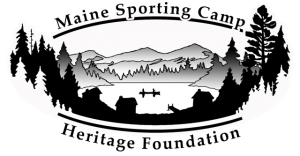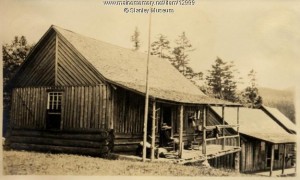What does it take to “preserve” a particular sporting camp? The answer is not always simple, as each sporting camp’s needs are unique, just as its character and owners are unique. But there are several key aspects that must be in place. They are:
1. Strength in Numbers
Overall, there must be a strong sporting camp industry in order for any one camp to survive and thrive economically. In the tourism marketplace, the collective marketing effort of the entire sporting camp must be large enough to maintain customer awareness. There must be a sufficient number of thriving camps in order to maintain the availability of business services, such as insurers, who are familiar with the unique needs of a sporting camp. This is also very true for regulatory agencies.
Like most land trusts, the Maine Sporting Camp Heritage Foundation has a significant focus on land conservation. However, unlike most land trusts, we are committed to programs that strengthen the economic viability of individual sporting camps, the nearby communities, and the overall sporting industry so each individual camp might become a fully sustainable and thriving source of nature-based recreation, and family business heritage.
2. Willing Landowner
Of utmost importance, the surrounding landowner must be willing. Landowners may receive financial gains, but they will also incur many expenses and drain on staff time should they choose to make a successful transaction. A credible approach, by a credible person or persons, is what leads to a landowner’s willingness to sell the camp lot and any rights or restrictions on the surrounding area.
The Maine Sporting Camp Heritage Foundation has developed an approach that simplifies the impacts on a landowner’s primary business activity, and has been well received by Maine’s large landowners.
3. Significant Funding
It takes a large amount of money. Period. That means up to $1 million for just the camp lot, plus the potential of $5 to $10 million for the surrounding land and easements.
No one wants to just “give” money. Only where their goals align with our needs will we succeed in our mission. The Maine Sporting Camp Heritage Foundation has spent considerable time developing relationships with potential donors and those who can help influence them.
4. Large Coalition
It takes a large coalition to complete a complex process. In addition to the landowner, there will likely be six or more parties directly involved – state and federal agencies, easement holders, fee owners, and legal experts. There must also need to be a coalition of supporters, promoters and donors to complete a deal.
For example, a project currently underway by a well established conservation fund directly involves at least 6 parties including a willing landowner, state and federal agencies and final easement holder and fee owner. In addition, at least 25 organizations, businesses, foundations and leaders, are involved as promoters and funders.
The Maine Sporting Camp Heritage Foundation has been working diligently to develop close alliances with those who can help in this way.
5. Time
A transaction involving multiple entities, land ownership and conservation easements is not at all like a real estate transaction between two individual persons. The entire process can span four or more years. In the example noted above, the willing landowner initiated the plan in 2012, and the coalition expects to close the deal by the end of 2016.
The Maine Sporting Camp Heritage Foundation spends most of our resources and time working to strengthen the elements mentioned above. While considered to be in its “formative” years, the Foundation must continue in these efforts forever.


